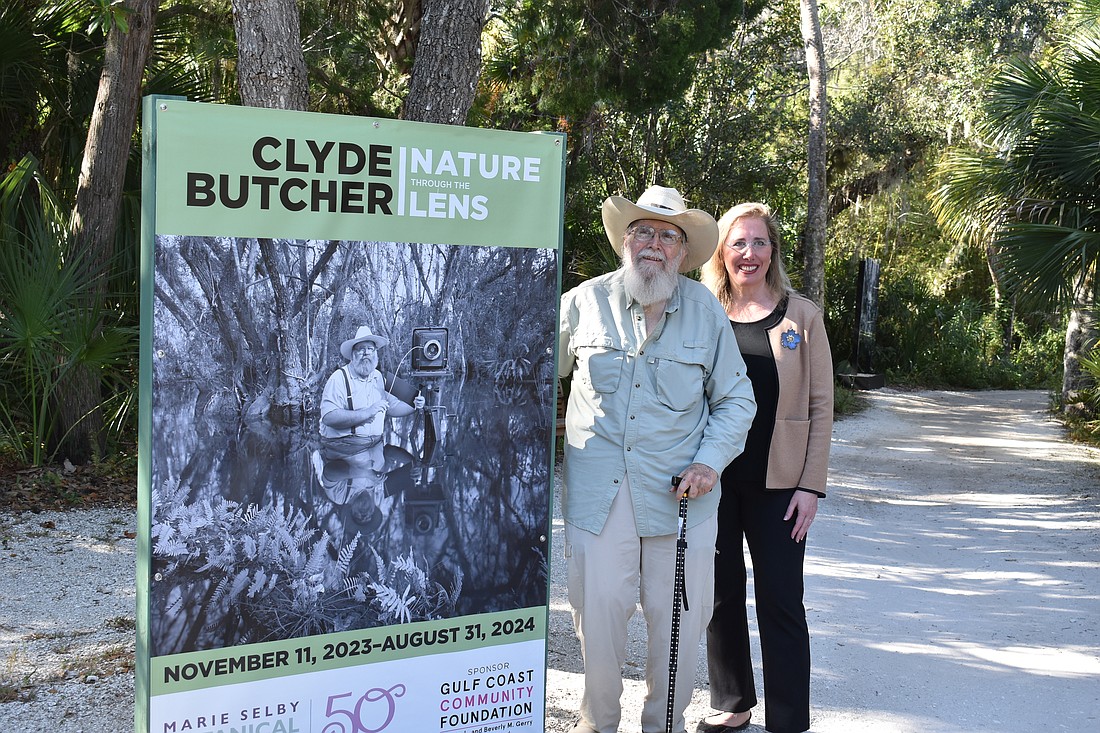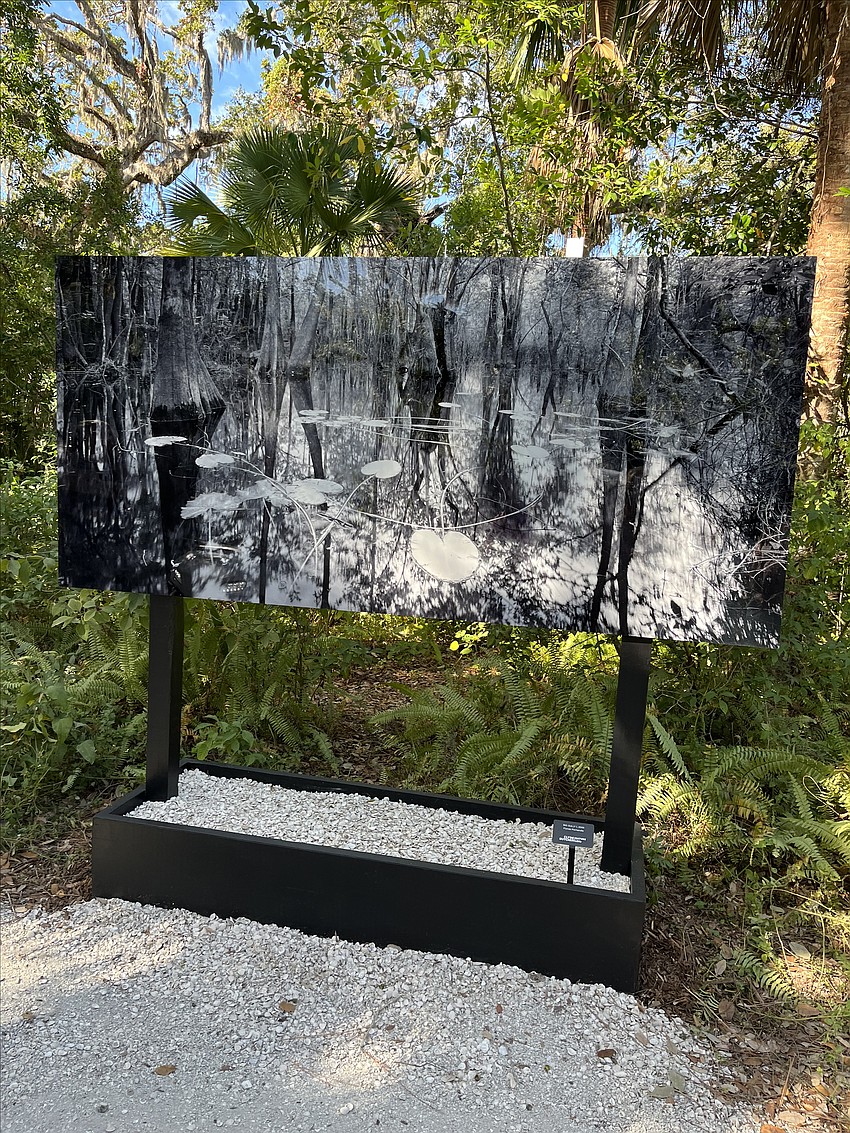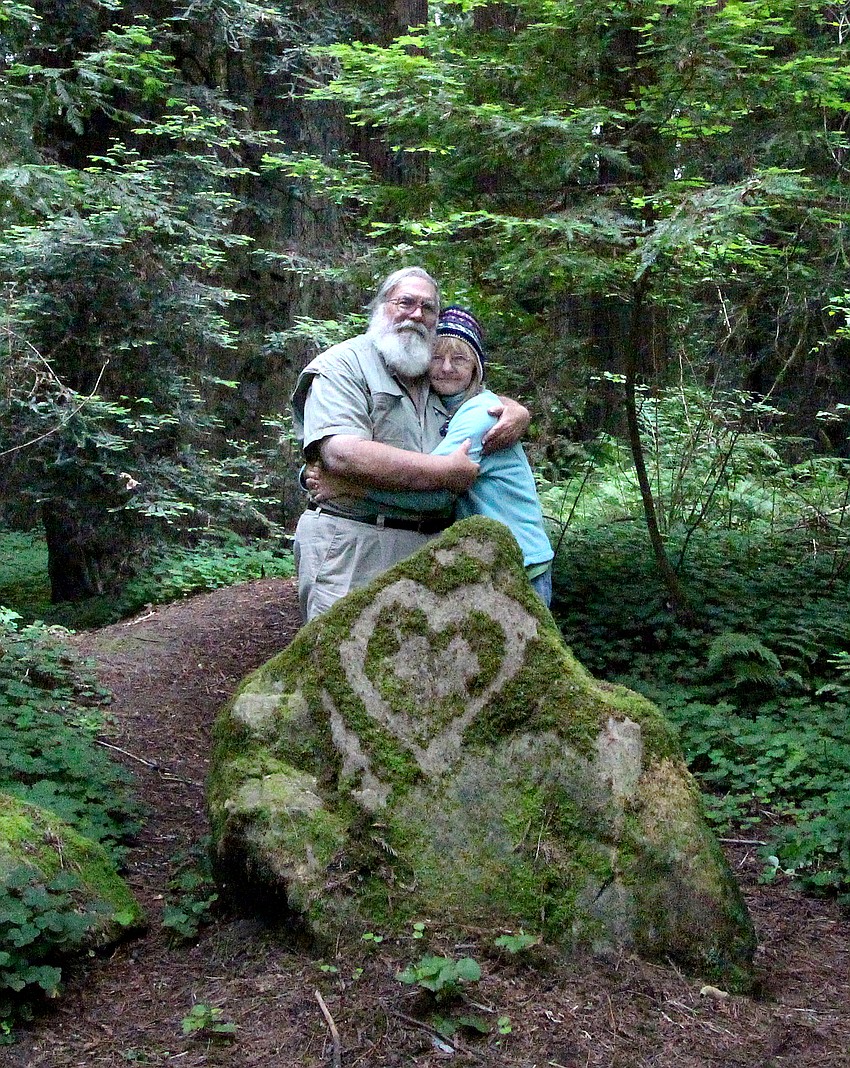- May 3, 2025
-
-
Loading

Loading

If you’re new to Sarasota or you’re not a photo buff, you may not realize you’re living near a giant in the field of nature photography.
Everything about Clyde Butcher is larger than life — his iconic 5-by-9-foot black-and-white photographs, his trusty 8-by-10-inch view camera on a tripod and the man himself, who looks a bit like Santa Claus dressed for a trip into the Everglades.
Butcher, 81, has had a gallery and darkroom in Venice since 2000 where his silver gelatin prints are on display along with the candy-hued photos by his wife, Niki Butcher. The Butchers also run a gallery and have a home in Big Cypress National Preserve in Ochopee.
Thanks to the efforts of their daughter Jackie and other family members, the Butchers have been documenting their 60-year life together. At the same time, they’re preserving the legacy of Clyde Butcher, often mentioned in the same breath as legendary American landscape photographer Ansel Adams.
Both Clyde and Niki do appearances and signings at their two galleries, area libraries and community centers, all worthy efforts to be sure. Clyde has also published several coffee table books and produced award-winning documentaries on Florida’s environment.
But now, Clyde Butcher has embarked on something big. Thanks to Marie Selby Botanical Gardens, his latest gallery is nature itself.

Through Aug. 31, 2024, Butcher’s large-scale photographs of Florida flora and fauna are on display at Selby’s Historic Spanish Point campus. Located off Tamiami Trail in Osprey, Spanish Point is a 30-acre waterfront park filled with landmarks such as a prehistoric burial ground, Sarasota pioneer Bertha Palmer’s gardens and a Victorian chapel with a cemetery.
As you walk the trails at Spanish Point and ponder Butcher’s timeless images, you remind yourself that while these are metal reproductions, they are not enlargements. These massive images are the same size as the original prints, or close to it.
By matching the size of his view camera to his subject, Butcher takes photos that allow the viewer to experience the landscape as he did in the field. He might use a 12-by-20-inch view camera for a landscape but take a photo of a ghost orchid in the wild with a 4-by-5-inch version.
Dating back to the 1850s, a view camera is a large-format camera where the lens forms an inverted image on a ground-glass screen. The image is viewed and then the glass screen is replaced with film, producing an image exactly the same as was seen on the screen.
During a recent morning at Spanish Point, the Butchers joined Selby Gardens President and CEO Jennifer Rominiecki and other Selby personnel to talk about the origins of the show, “Clyde Butcher: Nature Through the Lens.”
Even though his group consisted of residents of Florida, home of Everglades National Park, a favorite haunt of Butcher’s, the photographs on display at Spanish Point take viewers places they may not go themselves, unless they are the adventurous type.
“The Everglades is one of the few places in the world that’s so primitive yet safe,” Butcher said. “We had a group that was doing a Travel Channel thing that had just got back from the Amazon. They said, ‘This is prettier than the Amazon.’”
Bragging rights aside, Rominiecki noted, “You make the swamp pretty through your lens.”
“All I do is point and shoot,” Butcher answered humbly.
“Not really,” Niki chimed in.
It’s getting to the place where the pointing and shooting happens that is the most challenging part of Butcher’s work.
Although he has become famous for photographs of mangroves and orchids in Florida’s dark swamps, Butcher began his life in Kansas City, Missouri, the son of a sheet-metal worker.

He was working as an architect in California when he and Niki were married in 1963. A real estate crash left Butcher and his new bride wondering how they were going to pay the rent when a friend suggested that he sell the photos he had taken as a hobby at a local art fair. “He made more in that one weekend than he had in a whole month as an architect,” Niki recalled in an earlier interview.
The next 60 years saw the Butchers move from California to Ohio as they developed a successful wall decor business. Called Eye Encounter, the business sold clocks with Butcher’s images as background to stores like J.C. Penney and Montgomery Ward.
Along the way, they raised two children, Jackie and Ted, and lost one as Ted was killed as a teenager by a drunken driver. After selling the home furnishings business, the family traveled before settling down on a boat in Florida.
Selling Clyde’s photos and Niki’s artworks at shows around the country kept the family afloat for years. Although he had photographed other landscapes throughout the world, Butcher found his favorite subject — and spiritual home — in Florida in the early 1980s. He credits Florida native Oscar Thompson for taking him on his first walk in an Everglades swamp.
Later, Big Cypress provided a place for the Butchers to heal from the death of their son and the inspiration for a mother lode of Clyde’s environmental oeuvre.
Other than their scale, what makes Butcher’s photographs so captivating are their composition.
His relentless gaze and the patience required to capture images previously unseen by the human eye give his work a spiritual quality. His subjects have been artfully arranged by the hand of the Creator.
What better place to gaze upon these awe-inspiring images than Spanish Point? One cannot come away from the exhibition without deep reverence for the power of place and abiding respect for Butcher. Despite his humble, aw-shucks demeanor, the weathered lensman emanates a savant-like quality.
As you walk back to the parking lot, you’re not mistaken if you think you have been in the presence of greatness. Try to keep that feeling alive as you turn onto Tamiami Trail and its string of motels, offices and strip shopping centers.
The good news is you can always go back and see Butcher’s photos again until Aug. 31.